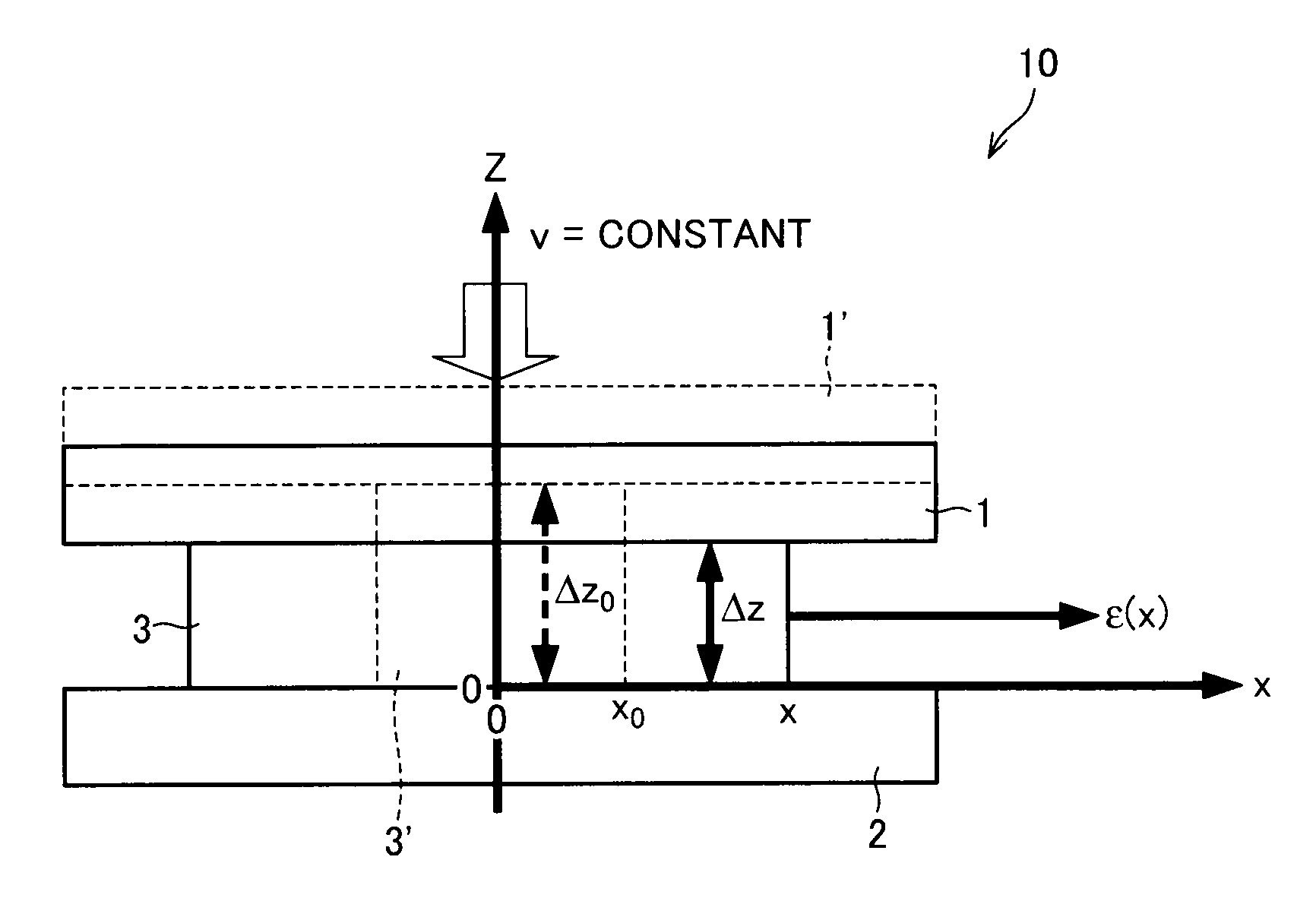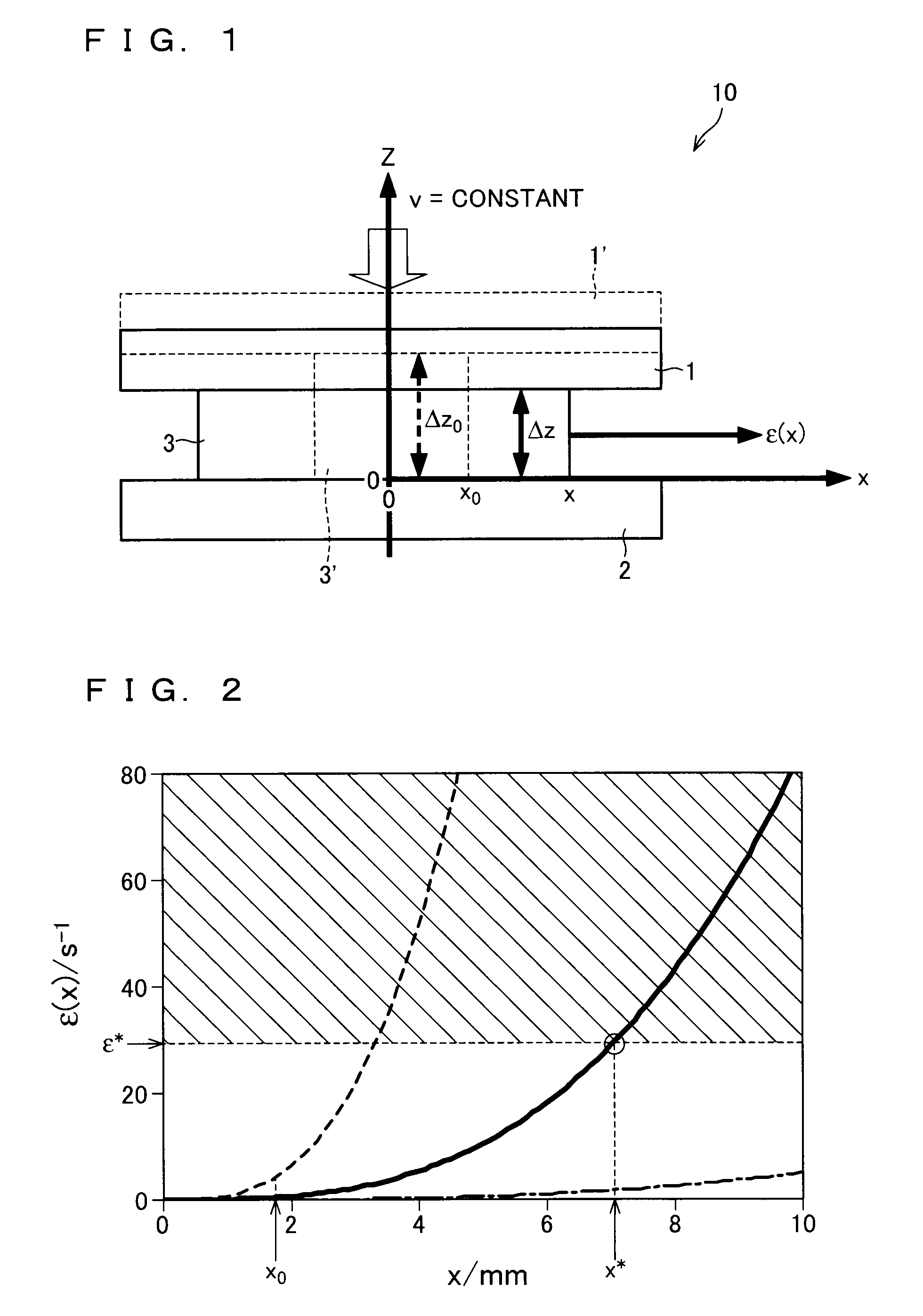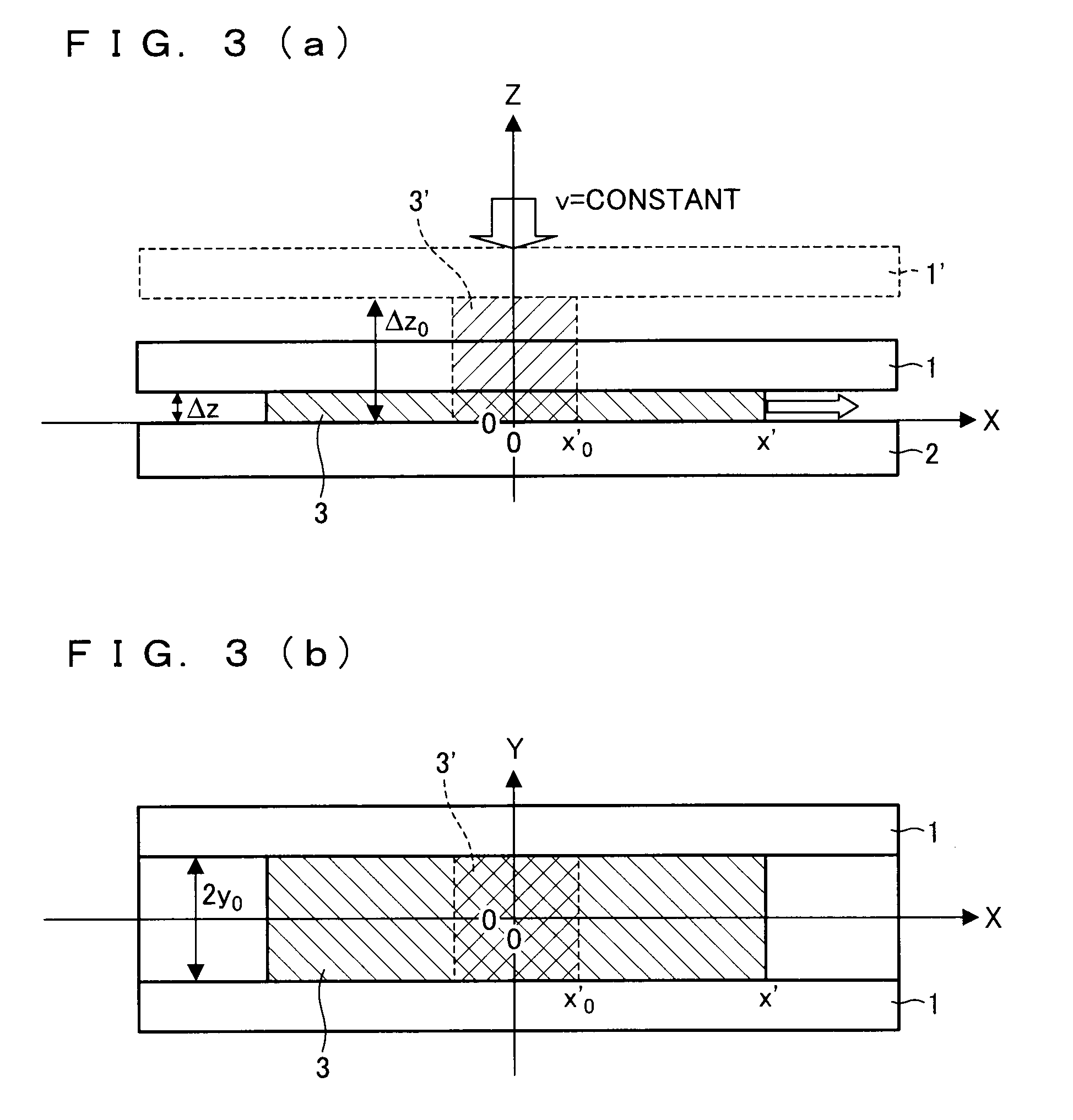Process for producing polymer oriented crystal, polymer oriented crystal produced by said production process, and method for determining critical elongation strain rate of polymer melt
- Summary
- Abstract
- Description
- Claims
- Application Information
AI Technical Summary
Benefits of technology
Problems solved by technology
Method used
Image
Examples
example
[0099]In the following, the present invention is described more specifically referring to Example. It should be noted that the present invention is not limited these Examples.
[0100]Isotactic polypropylene (referred to as “PP” in the present Example) used in elongation crystallization was prepared by the inventors of the present invention and had Mw=30×104, Mw / Mn=7 (equilibrium melting temperature Tm0=187.3° C.), where Mw is weight average molecular weight and Mn is number average molecular weight. It was assumed that Tm0 for Mw was identical with Tm0 of Mw determined in K. Yamada, M. Hikosaka et al, J. Mac. Sci. Part B-Physics, B42(3&4), 733 (2003).
[0101]The PP thus prepared was shaped in a disc shape and placed on a lower transparent board 2 of a Compression-type crystallization apparatus 10 (hereinafter, crystallization apparatus). Then, an upper transparent board 1 was placed on top of the disc-shaped PP. The PP under this condition was melted at a temperature of 200.0° C., to pr...
PUM
| Property | Measurement | Unit |
|---|---|---|
| Fraction | aaaaa | aaaaa |
| Tensile strength | aaaaa | aaaaa |
| Tensile strength | aaaaa | aaaaa |
Abstract
Description
Claims
Application Information
 Login to View More
Login to View More - R&D
- Intellectual Property
- Life Sciences
- Materials
- Tech Scout
- Unparalleled Data Quality
- Higher Quality Content
- 60% Fewer Hallucinations
Browse by: Latest US Patents, China's latest patents, Technical Efficacy Thesaurus, Application Domain, Technology Topic, Popular Technical Reports.
© 2025 PatSnap. All rights reserved.Legal|Privacy policy|Modern Slavery Act Transparency Statement|Sitemap|About US| Contact US: help@patsnap.com



